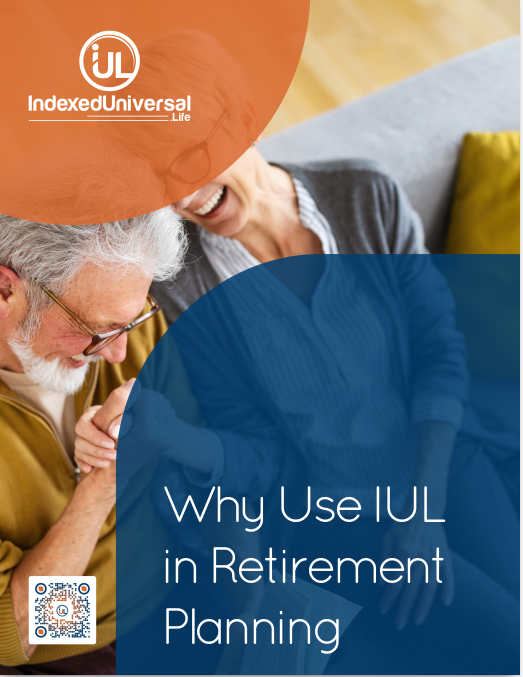
Key Takeaways
-
Whole life insurance offers both lifelong protection and financial growth through cash value accumulation, making it a unique retirement planning tool.
-
Properly leveraging whole life insurance can enhance retirement security by providing tax benefits, reliable income streams, and asset protection.
Understanding the Role of Whole Life Insurance in Retirement
When you think about retirement planning, your mind likely goes first to investments, savings accounts, pensions, or Social Security. But have you ever considered how whole life insurance might fit into that picture?
Whole life insurance isn’t just about providing financial protection for your loved ones after you pass away; it can also be a valuable part of your overall retirement strategy. Unlike term insurance, whole life insurance covers you for your entire life, accumulating a cash value component along the way. Let’s explore five distinct ways whole life insurance can support and even enhance your retirement goals.
1. Provides Lifelong Financial Protection
Security for You and Your Family
Whole life insurance provides permanent coverage, meaning it stays in effect as long as you pay premiums. Unlike term life insurance—which expires after a set period—whole life coverage remains active indefinitely, offering ongoing protection. This can give you peace of mind knowing your family will always have a financial safety net.
Stability Through Market Fluctuations
While investments in stocks, bonds, and mutual funds fluctuate with market conditions, whole life insurance offers predictable, guaranteed benefits. This stability can be reassuring as you approach retirement age, typically between 62 to 67 for many Americans, knowing your policy’s cash value will steadily grow without being directly impacted by market downturns.
2. Builds Cash Value Over Time
Your Policy’s Hidden Retirement Asset
Whole life insurance isn’t only about death benefits; it accumulates cash value gradually as you pay premiums. This cash value grows on a tax-deferred basis, meaning you won’t pay taxes on any growth until you withdraw it. Over several decades, this cash value can become a substantial asset, providing additional financial flexibility as you enter retirement.
Accessing Your Accumulated Cash Value
As you reach retirement, you can access this cash value in several ways:
-
Policy Loans: Borrow against your policy’s cash value at favorable interest rates. Policy loans don’t require credit checks or loan approvals and offer easy access during retirement.
-
Withdrawals: Withdraw cash directly from your policy. Be cautious, though—withdrawals could reduce your death benefit.
-
Surrendering the Policy: While surrendering your policy will terminate your coverage, it provides a lump sum based on your accumulated cash value.
3. Tax Advantages for Retirement
Understanding Tax-Deferred Growth
The cash value growth within your whole life policy is tax-deferred. Unlike regular investment accounts that trigger taxes each year, your policy’s growth accumulates without immediate taxation. You only face taxes upon withdrawal, allowing your investment to compound more efficiently.
Tax-Free Income Potential
If managed properly, the cash value in your whole life policy can be accessed tax-free. By borrowing against the policy instead of direct withdrawals, you can avoid paying taxes, assuming the policy remains active and the loans are properly managed. This approach can significantly reduce your retirement tax burden.
4. Supplementing Retirement Income
Creating Reliable Income Streams
Whole life insurance policies can provide a steady and reliable stream of income during retirement. You might choose to use your policy’s cash value through systematic loans or withdrawals, supplementing Social Security, pensions, or retirement accounts like 401(k)s and IRAs.
Bridging Income Gaps
The years between your retirement date and when you start receiving Social Security benefits or accessing retirement accounts without penalties (typically age 59½) might create income gaps. Your whole life policy can bridge this gap by offering easily accessible funds, ensuring your retirement lifestyle remains uninterrupted.
5. Asset Protection and Estate Planning
Protecting Your Retirement Assets
Whole life insurance often provides a degree of asset protection, depending on state laws. Creditors typically cannot seize the cash value within your policy, ensuring your assets remain safeguarded. This protection is crucial, especially if you’re self-employed or own a business.
Estate Planning Benefits
Whole life insurance provides valuable benefits for estate planning, including:
-
Estate Liquidity: The death benefit can provide immediate cash to pay estate taxes or other expenses, reducing financial burdens on heirs.
-
Inheritance Equalization: If you have multiple heirs but specific assets intended for certain family members, your whole life insurance death benefit can help balance inheritances, ensuring fairness among your loved ones.
Making Whole Life Insurance Work for Your Retirement
Consider Your Timeline
Whole life insurance works best when initiated early, ideally in your 20s, 30s, or 40s. Starting early provides more time for the policy’s cash value to accumulate significantly. However, even if you’re in your 50s or early 60s, integrating a whole life policy into your retirement strategy can still offer meaningful benefits.
Determining the Right Coverage Amount
When deciding on the coverage amount, think beyond death benefits. Consider the cash value you want to build, the income supplementation you might need, and how the policy aligns with your broader financial goals. Consult a financial advisor to ensure your coverage aligns with your anticipated retirement needs and financial circumstances.
Integrating Whole Life with Other Retirement Tools
Whole life insurance should not replace traditional retirement savings but rather complement them. Ensure your policy aligns well with your overall retirement portfolio, including investments, pensions, and retirement savings accounts, to maximize your financial security.
Potential Challenges to Keep in Mind
Costs and Commitment
Whole life insurance premiums are typically higher than term life insurance premiums. This long-term commitment means you’ll need to maintain consistent premium payments, potentially impacting your budget throughout your working and early retirement years.
Limited Flexibility
Whole life policies might offer less investment flexibility compared to other retirement vehicles like IRAs or brokerage accounts. While predictable and stable, they typically do not offer the growth potential found in riskier but potentially more lucrative investment options.
How to Decide if Whole Life Insurance Fits Your Retirement Plan
Evaluate Your Needs Carefully
Before choosing a whole life insurance policy, consider your retirement goals, financial stability, and risk tolerance. If stable, predictable growth, asset protection, and guaranteed lifelong coverage align with your objectives, whole life insurance could be a valuable component of your retirement plan.
Seek Professional Guidance
Deciding how whole life insurance integrates into your retirement plan can be complex. Consulting with a financial advisor helps clarify how a policy might fit your circumstances, ensuring informed decisions tailored specifically to your retirement goals.
Enhance Your Retirement Strategy Today
Whole life insurance can significantly strengthen your retirement plan through lifelong protection, predictable cash value growth, tax advantages, income supplementation, and asset protection. However, like all financial tools, its effectiveness depends on your individual needs, timing, and planning.
Discuss your options with a licensed financial advisor today to determine how whole life insurance could help secure your retirement future.





